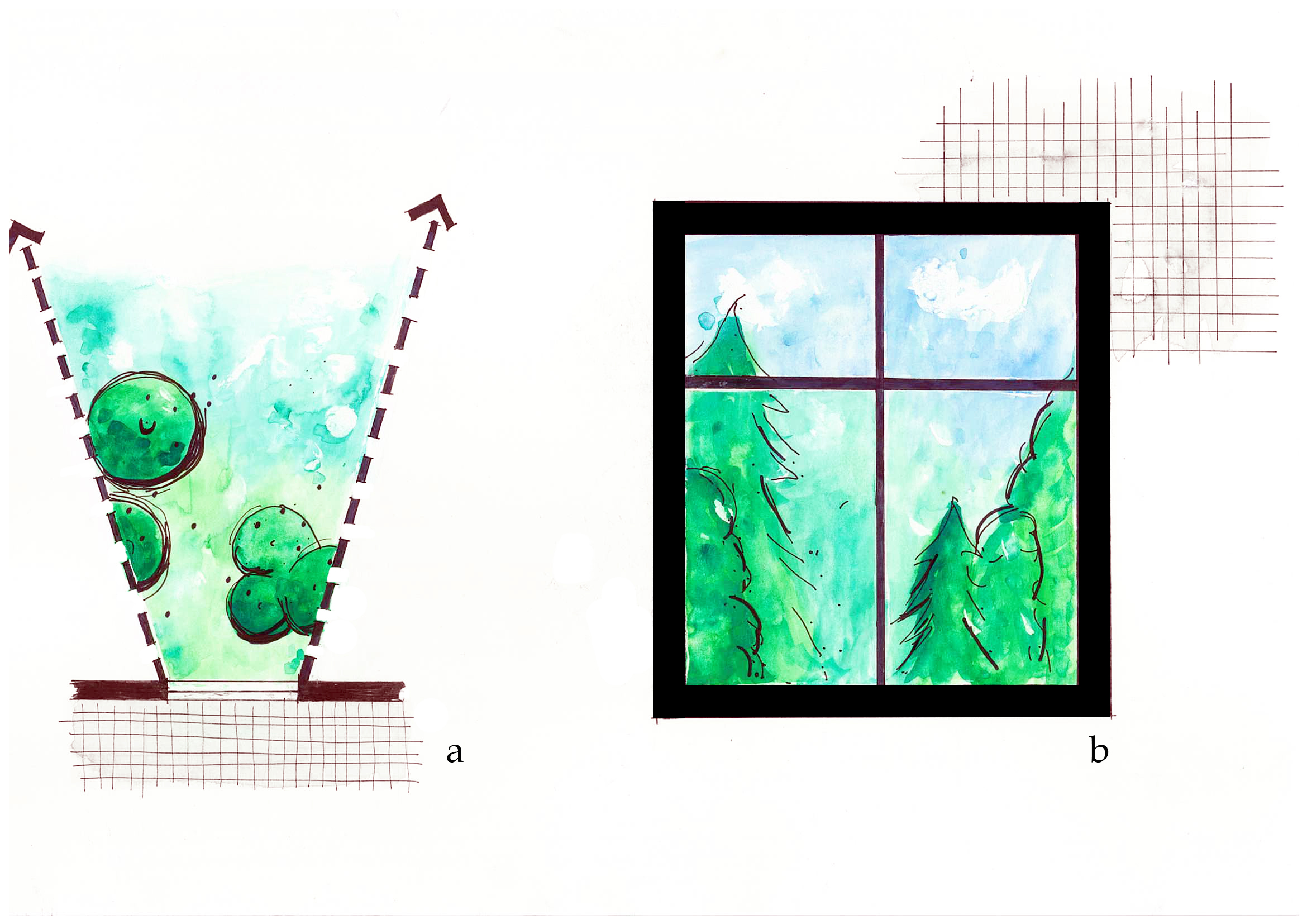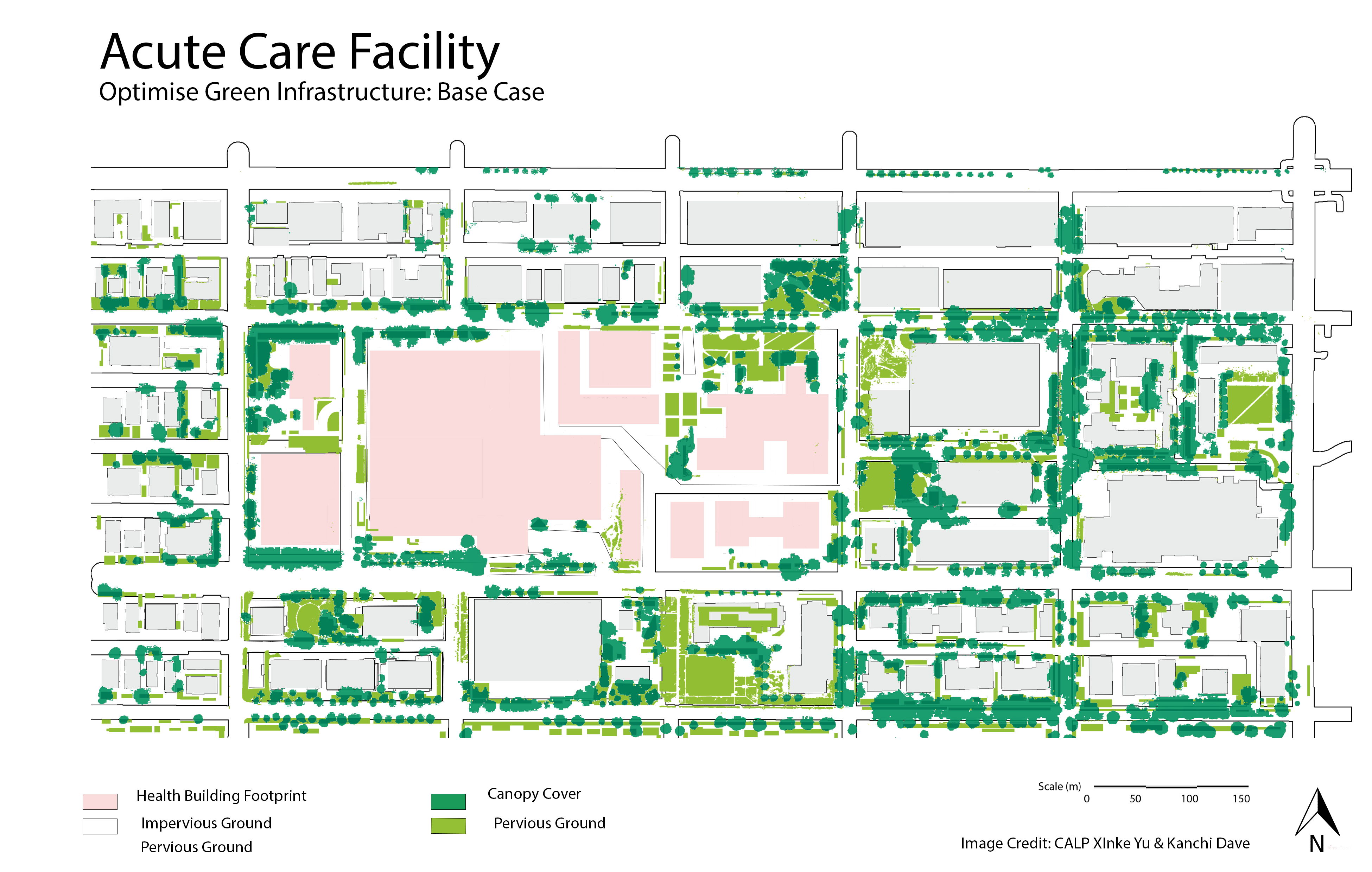CALP Researchers:
- Stephen R.J. Sheppard
- Sara Barron
- Xinke Yu
- Doris Sun
- Sophie Nitoslawski
- Kanchi Dave
Partners:
- Angie Woo – Fraser Health
- Erin Desautels – City of Surrey
- Kathleen Wolf – University of Washington
Green Design Strategies for a Healthy, climate resilient Cities
Cities across the world are experiencing significant increases in chronic diseases, while climate change is altering everyday lives. To find a solution, we teamed up with Fraser Health Authorities, the City of Surrey and nature therapy expert, Dr. Kathleen Wolf. Through an intensive literature review and drawing on our teams expertise, we found research that shows that just as multiple short bursts of physical activity can have the same benefits as one long exercise session, micro-doses of nature throughout the day can boost our physical and mental health and help prevent a wide range of diseases. This same urban green can also help reduce the impacts of climate change within our cities through reducing urban heat.
In order to maximise these health and climate adaptation benefits, our team has assembled a set of eight scalable evidence-based urban greening guidelines that are designed to increase urban green exposure for residents during a typical day
Our eight green design strategies
1. View from Within
Consider the view from within the building when implementing urban greening. Studies show that green views from buildings have restorative benefits. This intervention emerged from several psychological studies that show reduced stress or increased focus when viewing green through windows. Greenery that shades windows will also reduce a building’s energy use.
2. Plant Entrances
Does the building entrance have a welcoming green frame? Green entrances allow all building visitors to experience some nature in their day. Studies also show that greenery near entrances increases social interactions.
This intervention was inspired by studies on the social benefits of greenery near entrances in social housing projects. It was also inspired by the concept of Eco-acupuncture – the idea that small interventions can make large ripples through urban fabric.
Green entrances can also clean and cool air before it enters a building.
3. Bring Nature Nearby
Are there spaces near your building where people can relax while surrounded by plants? Nearby greenspaces provide opportunities for those with limited mobility or time to take a break near nature. This intervention was inspired by recent studies showing more positive birth outcomes from nature close to home.
Having small green spaces throughout a community can also help manage local stormwater.
4. Retain the Mature
When designing a landscape, it is important to keep older trees that provide aesthetic and emotional benefits. Studies show that people have a heightened response to large, mature trees.
This intervention was inspired by our ongoing research in a new suburban community where residents spoke about the loss of mature trees, and how they felt they hadn’t “made it” as a community because their neighbourhood lacked large canopy trees.
Large trees also provide exponentially higher ecosystem services like air filtering, cooling and CO2 removal, than small trees.
5. Generate Diversity
Have you measured the diversity of your landscape plants? Diverse plantings are more resilient to changes in climate and to new pests and diseases. Planting a diverse range of tree species protects against forest health risks and also provides aesthetic benefits.
Though a wide range of species is recommended, we need to be careful about using species that fall into the ecosystem disservices category, like high pollen producing trees that can affect people with allergies.
6. Create Refuge
It is important to ensure there is enough green shade to protect everyone during an extreme heat event. The shade from a large area of continuous canopy provides shelter during a heat wave. Studies have also shown that large groups of trees provide higher cooling benefits than smaller trees.
7. Connect Experiences
Can people walk continuously along a shaded pathway? Having a continuous pleasant walking area can increase physical activity and green routes can be inviting and encourage recovery from disease. Recent work in Australia is mapping shadeways through neighbourhoods to promote cool walking routes during summertime.
8. Optimise Green Infrastructure
Finally, our changing climate means there is increasing need for adequate green and permeable spaces to allow stormwater runoff to escape. Recent studies have found that 40 per cent canopy cover makes an important contribution to urban cooling and to further reduces stress.
Download the best practices guide:
Webinar on the design strategies:
Project Funders:
- Real estate Foundation
- Urban analytics
Project Contact
- Sara Barron: sara.barron@ubc.ca




